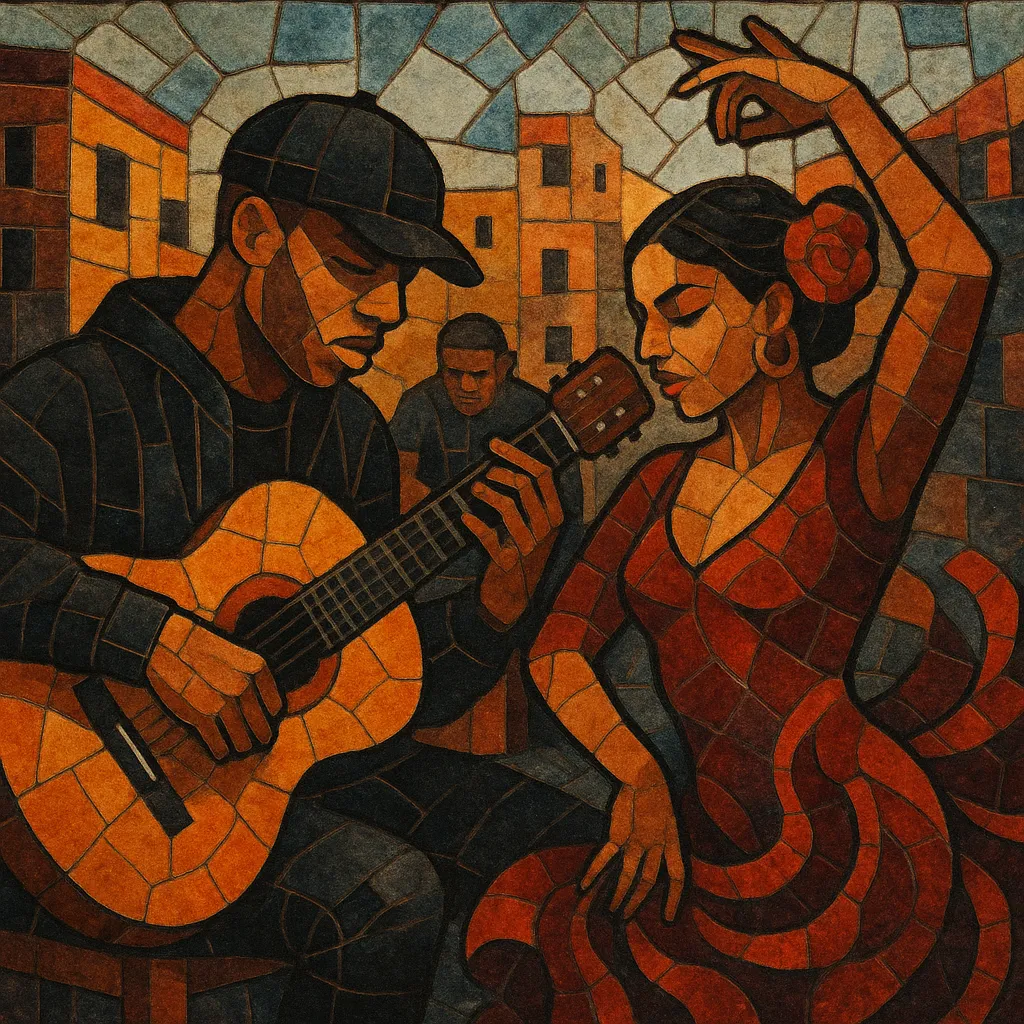Flamenco urbano is a contemporary Spanish fusion that blends core elements of flamenco—cante jondo vocal timbre, palmas handclaps, rasgueado and picado guitar, cajón, and the Andalusian cadence—with modern urban production such as reggaeton dembow, trap 808s, hip‑hop sampling, and R&B toplines.
Compared with the earlier nuevo flamenco, which often merged flamenco with jazz, rock, and pop, flamenco urbano is explicitly grounded in post-2010s urban idioms and streaming-era aesthetics. It often features autotuned melisma, loop-based harmonies, processed claps, sparse bass-forward beats, and lyrics that pivot between street realism, romance, pride, and cultural identity. The result is music that can be club-ready and rhythmically infectious while retaining the emotive intensity and ornamentation of flamenco.
Flamenco urbano emerged in Spain during the 2010s as artists from Andalusia, Madrid, and Barcelona began combining the compás and vocal aesthetics of flamenco with the rhythmic frameworks and sound design of reggaeton, trap, and hip hop. The rise of affordable production tools and YouTube/SoundCloud helped a new generation share experiments outside traditional label pipelines.
Grassroots singles and mixtapes from Granada and Madrid scenes—often built on rumba/tangos grooves layered with dembow, 808s, and looped guitar—laid the groundwork. Artists like Dellafuente, Maka, Moncho Chavea, and Original Elías helped codify a palette where palmas and jaleo could coexist with hi-hat rolls and sub-heavy kicks.
By the late 2010s, projects that foregrounded flamenco technique within pop/urban production crossed over. Rosalía’s "El Mal Querer" (2018) brought global attention to the fusion’s possibilities, while C. Tangana’s "El Madrileño" (2021) showcased high-profile collaborations with flamenco and copla voices within urban arrangements. Streaming platforms and social media accelerated the style’s visibility across Spanish-speaking markets.
Flamenco urbano maintains emotive cante, Phrygian/Andalusian harmonic colors, and palmas-driven syncopation, but pairs them with dembow patterns, halftime trap, and R&B toplines. Its rise sparked debates: purists questioned stylistic boundaries and cultural stewardship, while others celebrated the hybrid as a living continuation of flamenco’s long history of exchange and adaptation.
The style now spans club bangers and intimate ballads, and thrives on collaborations between flamenco singers, guitarists, beatmakers, and urban vocalists. It influences Spanish pop and indie spheres, tours festival stages, and continues to evolve through crossovers with Latin urban scenes.


